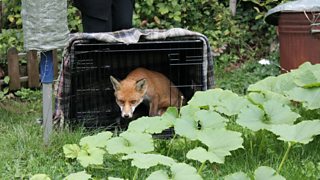Since last February, we have been studying in Brighton and Hove, to find out where they go, what they do, and why. We capture foxes in live traps and attach GPS collars, before releasing them and subsequently monitoring their movements remotely.

��A urban fox that will be tracked using a��GPS collar
During this process, Brightonians have generously allowed us access to their gardens, sometimes at very unsociable hours, and without this contribution, my colleagues and I couldn’t have gathered such a wealth of data.
Urban foxes are traditionally associated with bin scavenging, but we have been struck by the number of people who regularly feed foxes, sometimes by hand. Inevitably more questions have arisen: does feeding mean more foxes? Does it create ‘bolder’ foxes, accustomed to close contact with humans? Is it a good idea to feed foxes at all?
There is no straight answer to the last question. The benefits to human well-being from interacting with nature are well documented and for many – especially those in urban areas - opportunities to watch wildlife are limited.
Globally, the expansion of towns and cities means that wild carnivores have to survive in urban environments. It’s fantastic that city children can watch wildlife so easily. On the other hand, the few but alarming incidences of foxes biting people in recent years make us question the wisdom of getting so close. Are we artificially enhancing fox numbers and inevitably creating conflict?
We hope our study will shed light on some of these issues. We also hope, in due course, to provide concrete advice on how we can peacefully coexist with such an interesting and adaptable species.
